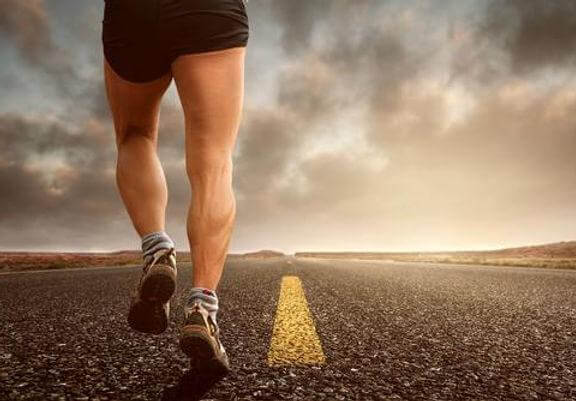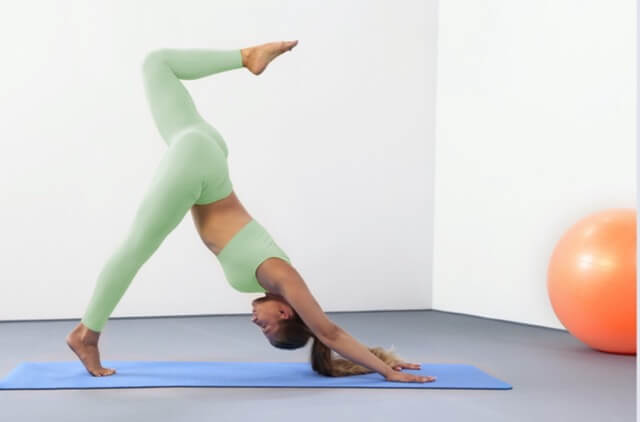Author: Randeep Singh / go to all articles on Yoga cure
Yoga for Calf muscle:
Calf (calves as plural) is the posterior part of the lower leg (below the knee), which is conspicuous by a outward bulge which runs along its length in contrast to the thinner, shin bone, anterior.
The bulge in the calf is due to the presence of gastrocnemius muscle, which originates at the lower end of the thigh bone, femur, and ends a little above the heel bone (calcaneus). Yoga for calf muscle is an excellent workout for this often neglected part of the body.
The lower end of the gastrocnemius muscle is attached to the Achilles tendon which insert into the heel bone. On its origin the gastrocnemius muscle divides into two parts, medial and lateral, which again join before this muscle attaches itself to the Achilles tendon to be finally inserted into the heel bone.
Soleus is the second muscle of the calf which originates behind the knee runs behind the gastrocnemius along the entire length of the lower leg till it end into the heel bone . A third muscle, the plantaris, originates lower than the origin of the first two muscles and runs in between them.
Since the origin point of the gastrocnemius, along with other two calf muscles, is on the lower part of the femur it pull on to the femur for bending the knee, and simultaneously pull the heel up while walking, jumping, or running.
Since all the three activities demand strenuous action on the part of the calf muscles, these muscles are prone to strain (stretching beyond limit), tear (tearing of some muscle fiber from the strain), rupture (complete snapping of the muscles).
The calve muscles may not be externally adding to the overall looks of the body, but ignoring their strength and tone can cause serious health consequences.
The strength and tone in the calf muscles is required to push the venous blood up, as the contract, into the legs towards the heart against gravity. Maintaining the strength of the calf muscles is crucial as these muscles are crucial to general maneuvers of the legs in day to day activities.
Women who wear high heels have weak calf muscles, the calf muscles lose their strength while constantly trying to stabilize the ankle joint positioned higher than the toes on high heels. This weakens the pressure of the venous blood flowing from the feet towards the heart.
Lastly calf muscles are the foundation of stability to the human body which stands balanced on two feet, the contraction in the soleus muscle stabilizes the backward sway of the body in a standing position.

Yoga for Tight calf muscles
The basic leg and feet movements that involve, and help strengthen the calf muscles ( Calf exercises) are raising the body up on the toes, making a foot inversion , rotating the foot inwards (turning both the soles towards each other). Pulling the toes towards the knees stretch the calf muscles.
Thus, the calf exercises, or the yoga stretches for tight calves incorporate these basic movements to strengthen and tone up the calves. Calf stretches yield best results if they are held for as long as possible, releasing it a bit short of any possible muscle tear. The leg raises which form the part of yoga to strengthen calf muscles utilize the bodyweight to strengthen the gastrocnemius muscle.
Good yoga poses to open calves must include yoga asanas which work by appropriately stretching the calve muscles for strengthening them and also which increase the mobility of the leg to benefit running, walking, and jumping. Heel raises with progression when included in the calf stretching yoga poses help build up the eccentric strength in the calves.
Calf exercises variations with jumping apply the weigh ton the calves eccentrically and enhances the endurance of these muscles. Lunges are a must to be included in the yoga asanas for toned calves because they enhance the functional stability of the foot by training the calve muscles from multiple directions at the same time.
Regularly practicing yoga for tight calves reduces the possibility of injury, enhances the feeling of wellbeing in the mind, enhances the blood circulation in the lower part of the legs, and decreases the aches and pains related to daily activities like walking up or down the stairs, as well during daily yoga workouts.
Calf stretches are important as tight calf muscle put the Achilles tendon at the risk of tear, cause plantar fasciitis, and ankle sprains. Yoga for calf muscle helps prevent all these conditions by keeping these muscles at optimal function.
Yoga asanas for toned calves also prevent muscle spasms, and Charlie horses in the legs.
Yoga Asanas for Toned Calves
Other Informative Articles….

